
program and website founded by Pierre Briant
The Achaemenid Persian Empire
from the Bosphorus to the Indus
river, from 550 to 330 B.C.
from the Bosphorus to the Indus
river, from 550 to 330 B.C.
search
Publications
Achaemenid museum and Iconographic resources
Textual sources
my space
You are not connected
I have my space
Please enter your identifiers to connect to your space
I forgot my password
You will be sent your password
Please type your emai.l
I create my space
Please type your email and a password of at least 6 characters to create your space.
Processing...
Change my password
Please type your password et a new one with at least 6 characters.
Change my email
Please type your password and a new valid email
back to folders

x
Créer mon espace
En créant votre espace vous pouvez mémoriser les fiches de manière permanente et les rappeler d'une session l'autre.
- Cliquez sur l'onglet "Je n'ai pas d'espace".
- Saisissez votre adresse mail et un mot de passe d'au moins 6 caractères.
- Cliquez sur le bouton "créer".
- Une demande de confirmation vous sera envoyée par mail. Vous devrez cliquer sur le lien interne afficher dans ce mail pour activer votre espace.
Modifier mes identifiants
Vous devez auparavant être connecté à votre espace.
- Cliquez sur votre email qui apparaît en haut à gauche du panneau "mon espace".
- Pour changer votre mot de passe cliquez sur l'onglet "Changer mon mot de passe".
- Pour changer votre adresse mail cliquez sur l'onglet "Changer mon email".
 Créer un dossier
Créer un dossier
Vous pouvez classer vos fiches dans des dossiers. Pour Créer un dossier :
- Cliquer sur ce bouton pour créer un nouveau dossier.
- Saisissez un nom de dossier.
- Cliquez sur le bouton "ok" pour créer le dossier.
- Cliquez sur le bouton "-" ou "x" pour abandonner la procédure.
 Renommer un dossier
Renommer un dossier
- Cliquer sur ce bouton pour éditer le nom du dossier.
- Saisissez un nouveau nom.
- Cliquez sur le bouton "ok" pour enregistrer la modification.
- Cliquez sur le bouton "-" pour abandonner la procédure.
 Supprimer un dossier
Supprimer un dossier
Cette action supprime toutes les fiches mémorisées dans le dossier.
- Cliquer sur ce bouton pour supprimer le dossier.
- Cliquez sur le bouton "-" pour abandonner la procédure.
- Cliquez sur le bouton "x" pour supprimer la procédure.
 Mémoriser une fiche
Mémoriser une fiche
Depuis la fiche :
- Cliquer sur ce bouton situé en haut à droite de la fiche.
- Dans la liste déroulante qui apparaît à côté du bouton, sélectionnez le dossier dans lequel vous souhaitez enregistrer la fiche .
- Le message "document enregistré" apparaît en remplacement de la liste pour vous confirmer que l'action a été effectuée.
 Déplacer une fiche
Déplacer une fiche
Depuis mon espace :
- Ouvrez le dossier où se trouve la fiche à déplacer en cliquant sur le nom du dossier.
- Cliquez sur la petite flèche en haut à droite du contenu du dossier.
- Dans la liste qui se déroule, cliquez sur le dossier de destination.
 Supprimer une fiche
Supprimer une fiche
Depuis mon espace :
- Ouvrez le dossier où se trouve la fiche à supprimer en cliquant sur le nom du dossier.
- Cliquez sur la petite flèche en haut à droite du contenu du dossier.
- Dans la liste qui se déroule, cliquez sur "supprimer ce document".
archaeological sites
-
-
-
-
Susa
-
-
presentation of the Susa visit
Susa - the site
 discovery of Darius' statue © Mission archéologique de Suse |
The site that was occupied prior tofrom 4000 BC had been a capital of Elam. The city shone until the end of the 2nd millennium BC then became more modest, but was still thriving when the Persians arrived. This is how Darius found it when he decided to establish one of his residences here circa 520 BC. The king delimited 70 hectares with a high embankment enclosing the three hills that had been occupied beforehand. |
the excavations
|
Revelation of Achaemenid Susa was the fruit of several years of excavation. The Apadana columns and their inscriptions were discovered in 1853 by William K. Loftus. |
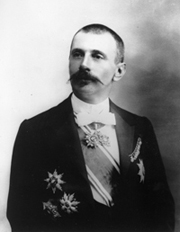 Jacques de Morgan (1857-1924) © musée du Louvre |
the visit
Due to their topographical layout, the vestiges can be presented separately, even though the remains of the royal city form a whole. The itinerary moves from generalities to specifics; it envisages the overall site, then proceeds from the exterior towards the centre, to Darius’s Palace proper. Each building is presented in turn as a whole, then sectors of a smaller scale are detailed, along with any components that have been found. Outside the palace complex, a few scattered remains bearing witness to occupation are rapidly evoked; we finish with the palace built outside the “royal city”. The iconographic documentation presented here (photos, plans and drawings) is broadly a selection drawn from the archives of the French Archaeological Mission at Susa, which are preserved at the Maison Archéologie & Ethnologie, René-Ginouvès in Nanterre.
Rémy Boucharlat (Maison de l'Orient et de la Méditerranée, Lyon) / March 2013
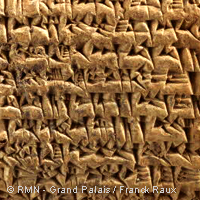
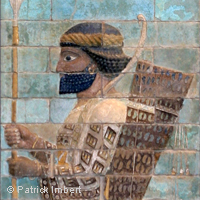
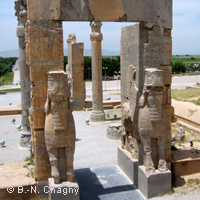
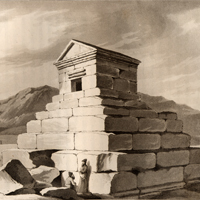
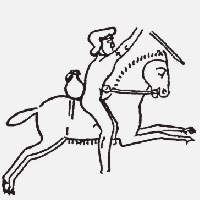
 rss
rss twitter
twitter